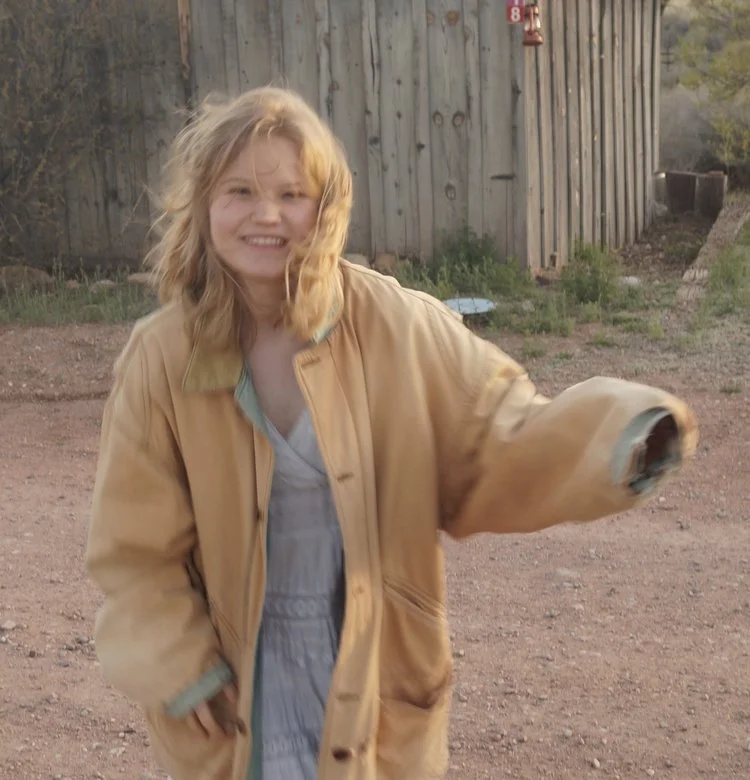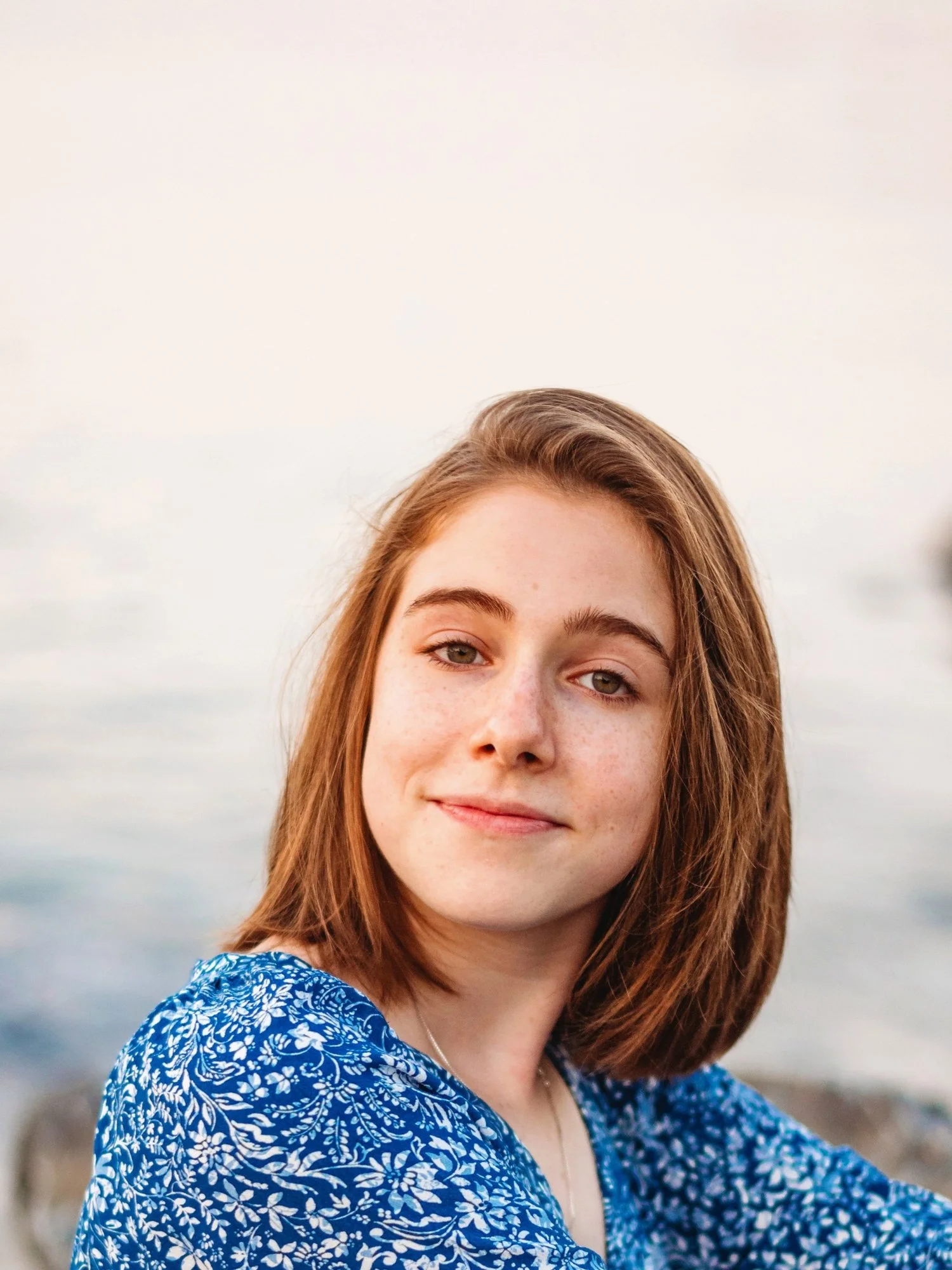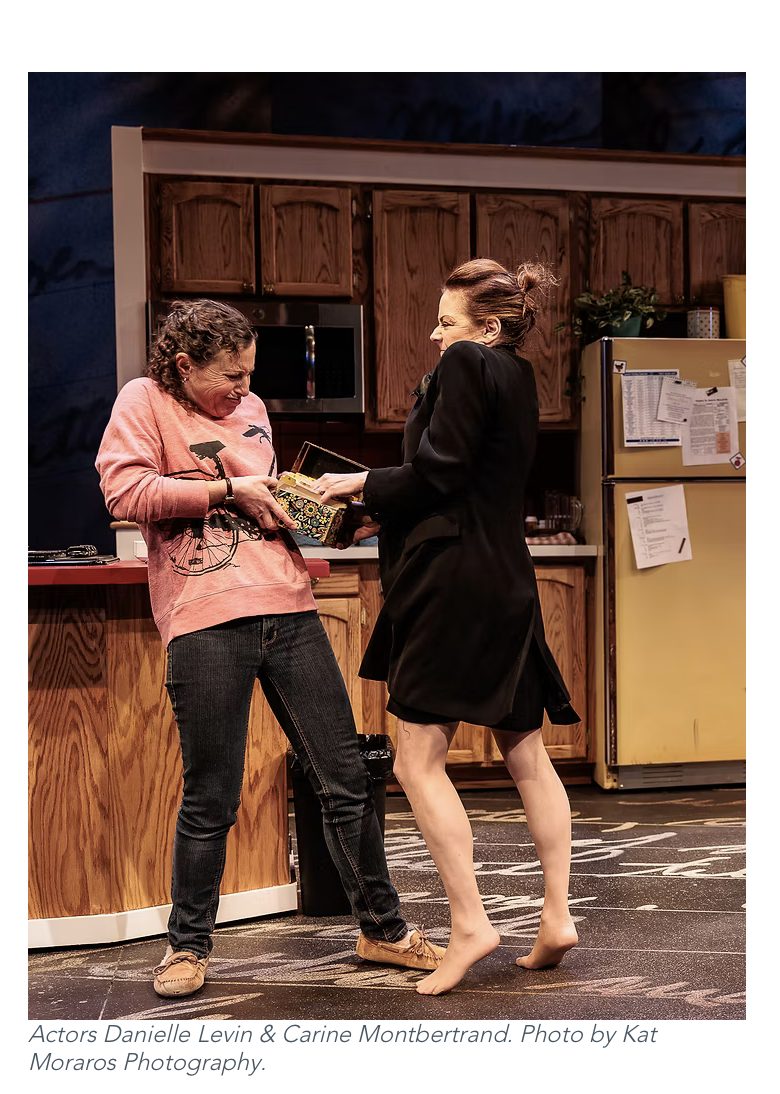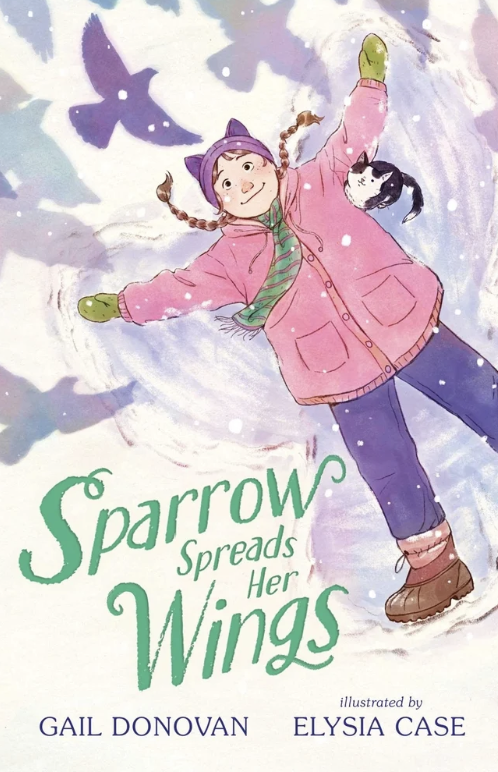2025 MLA Interviews
Youth Poetry
“Three Poems”
Ruby Van Dyk
How did you decide to divide your work into three poems/sections?
These poems were all written at three different times in my life, however, I liked the way they fit together. It was not exactly a decision to have them read together in this way, it was more like a coincidence. They were my three favorite poems besides the ones that I am publishing in my book currently, and while I didn't necessarily put them together intentionally it produced something even more beautiful. "My Grandmother's Lung" and "Waltzing" are about climate change and violence in schools respectively. Both of these issues have felt to me like they are placed on the shoulders of youth. We bear the brunt of them, always having to search for solutions and fight for our lives essentially. This is a burden that has caused great anxiety and fear for me, I am always wondering if I am doing enough. Writing these two poems was a bit of a catharsis, especially with "Waltzing", it allowed me to openly express the very real fear that I felt during all of the threats that have been sent to my school, as well as acknowledge the pain in trying to stay strong during those times. The other poem in this collection "Step Two" is about what comes after catharsis, revolution. I think even if it was not entirely planned out these poems have held each other up and only emphasised the point behind writing them.
What inspires you to write and keep writing?
Reading is the biggest thing that inspires me. When I hear the voice of a poet or writer I am immediately drawn back to pen and paper again. I recently went to go see Ocean Vuong talk in Boston and even though I arrived home at around midnight, I wrote multiple poems just that night. It is incredible how listening to other writers can be the jumping off point to so much deep creativity. I would also be remiss to not mention being in community with other writers. I cannot count the number of times a poem was born out of conversation or write into the room prompts at The Telling Room.
What was your greatest challenge while writing these poems and how did you overcome it?
I think the biggest challenge with this was less so the actual writing of the poems but more so the process of accepting that the emotions I expressed in these works could stay raw and unfiltered. I am not a very outwardly emotive person most of the time, especially with emotions like sadness and exhaustion. So, fighting the urge to edit out these feelings was difficult, but I knew that what made the poems strong was how fervently I represented them. I am still working on not filtering myself as a poet, but I think realizing the way people connect with emotion is one of the things that has helped me to feel less ashamed.
What do you hope readers learn from "Survival of the Flawed"?
I wrote "Survival of the Flawed" with the hope to communicate the idea that it is unreasonable to hold yourself to a standard of constant perfection. As long as you are trying your best and doing what is best for you (and not hurting yourself or others), you might as well be “perfect.”
What do you believe makes your writing unique?
While I am still developing my writing style and "voice" so to speak, I feel like what makes my writing stand out is the intentionality behind everything I write. I try my best to infuse every piece I work on with a great deal of emotion and meaning. Writing is a way to connect with people, and I am constantly trying to find new and creative ways to do that.
What do you love most about writing and the writing process?
I love experimenting with different writing techniques. I am still learning how to communicate my ideas effectively, and it is always such a joy to discover new ways to do that, whether that be through figurative language, format, etc. I also love those moments when I'm trying to stumble through the first draft of a piece and everything just clicks. When after hours or days of trying to haphazardly string things together suddenly I know what metaphor to use to weave all my ideas together, what symbolism to implement to make my point stand out, what information to withhold for the sake of surprise, all that jazz. There's very little that feels more exhilarating than feeling everything click into place.
Who was your favorite character to develop and write in Madeleines?
I'm terrible with choosing favorites but I'll say I found so much excitement when I decided to have the same actor play both Rose in Act 1 and Lilia in Act 2. I love giving actors juicy challenges and to watch the magic in their transformation on stage. I tried to write these half-sisters who never knew each other to be wildly different from each other but also have some small thread that would reveal their similarity. Rose puts aside her love of writing poetry to support her family while Lilia chooses to live her life through poetry. It was also a complete delight to collaborate with translator Christina Ruiz de Luque to bring alive the poem I wrote for/as Lilia in Spanish.
How did you select the setting you did and why do you believe it is so fitting for the play?
The first act takes place in Rose's kitchen, which her daughter Debra describes as looking exactly as it did in the 1980s in a "time-capsule ziplock." There really couldn't have been another setting for this part of the story and since I placed the family home in a rust-belt town in Northeastern, Ohio I could draw directly from my own lived experience growing up in Youngstown. In Act 2, we move to Jennifer's apartment in New York City, which provides a parallel kitchen for the rest of the story to unfold. In this act we are tracking Jennifer's spiral downward and then the eventual small step toward healing when her sister Debra teaches her to bake their most treasured and freighted family recipe in her own home. I lived in New York for many years and again was able to draw on the details of that personal experience to shape the place/setting for the second half of the play.
Who inspires your work most?
I'm inspired by my grandmothers, who I never got a chance to really know. I'm inspired by other playwrights who bring high theatricality to what would otherwise be a realistic play like Tony Kushner, Paula Vogel, Hansol Jung, Kirsten Greenidge. I'm inspired by the fiercely hard working playwrights I call friends like Callie Kimball, Catherine Stewart, Brent Askari, and Monica Wood. I'm inspired by the often invisible work of dramaturgs like Maine artists Todd Brian Backus and Daniel Burson. I'm inspired by directors who help shape new plays like Annette Jolles, Sally Wood, and Leslie Martinson. I'm inspired by the dozens of theatermakers I know and love who have not given up even when our whole world changed during Covid-19 and now that funding is even more scarce.
How do you go about writing a series? Do you conceive of it ahead of time or go with the flow?
I am in awe of authors who say to themselves, "I need this many books to tell this story," and they map it out, and write the books. But to be honest, that was not how my series came about. I wrote a book called Sparrow Being Sparrow, and it wasn't taken on the first round of submissions. My agent told me, "I really think I can place this if we pitch it as a series rather than as a stand-alone." I was determined to find a good home for Sparrow, so I began visualizing how to continue her story. I came up with two more ideas that spanned Sparrow's whole school year, from the summer before fourth grade to the summer after, and my agent sent the manuscript out again. To my delight, Simon & Schuster said Yes! Now I can't imagine any of the books on their own; I'm so glad there are three. Sparrow Spreads Her Wings is the second book, and the third, Sparrow, Always, will come out in November of 2025.
What do you hope all readers (young and old) can learn from Sparrow Spreads Her Wings?
Trick question, right? I don't hope for readers to learn anything! I only hope they'll enjoy the story. Nobody put it better than Beverly Cleary, who said: "I wrote books to entertain…I’m not trying to teach anything! If I suspected the author was trying to show me how to be a better behaved girl, I shut the book."
What do you enjoy most about writing?
I love getting up early, making a pot of tea and taking it up to my study, then sipping tea as I search for the right word to move the sentence forward, and the right sentence to move the paragraph forward, all while the world—and my brain—are waking up.
What does your writing process look like?
My process consists almost entirely of revision. The only problem with that is I have to draft something every so often. In the early stages, I’m writing to figure out what I’m writing. Once I get a first draft, I’ll spend months reworking it, making massive changes and tiny refinements, until every syllable does exactly what the story needs. I also give stories a lot of time on the shelf so I can come back to them with more objectivity.
Like many of my pieces, “Downstream Benefits” started as a gag. I’d planned to write it as a short satire of corporate culture, with the narrator running “a side hustle translating Normal to Business.” That was cute but didn’t have much substance. So I kept writing, just riffing on things, until a deeper meaning emerged. Once I realized that dehumanizing business jargon could represent the fractured communication that comes with depression, it was just a matter of putting maximum pressure on my protagonist. I say “just a matter of” like it wasn’t a big deal, but it was. The story went through countless revisions, including several major overhauls, and took about a year to finish.
This painstaking approach means I don’t produce a huge volume of work, but I’m okay with that. I’m in it for the experience of crafting a story. And it’s the only way, as far as I know, to achieve the layered storytelling I’m looking for.
What do you believe makes your writing unique?
The most notable thing about my work is that it combines opposites, especially humor and drama. I write like this because it’s just the way I’m wired. I’m a deeply silly person, but I also want to talk about things that matter. And humor is a handy way of quickly building a relatable character; readers are more likely to lower their guard for a character with a sense of humor. From a craft standpoint, humor heightens the drama, and vice versa. It’s more than just comic relief; a story without both elements feels incomplete to me. Life’s not monolithically funny or strictly dramatic, so why should a story be?
I’m also infinitely amused by slang and idiomatic language, so I plunk that stuff down alongside more formal modes of expression. This contrast creates an enjoyable texture, sometimes even tension. “Zhoosh,” perhaps the funniest word in “Downstream Benefits,” is juxtaposed with words like “inscrutable” and “incomprehensible.” These tonal mixtures allowed me to portray that maddening, oxymoronic, work-from-home experience of the pandemic. It was also another way to illustrate the protagonist’s feeling of being caught between his absurd work life and the harrowing situation with his wife.
How and why did you decide to divide your work into sections the way you did?
The titled sections are an artifact of an early draft that took the form of a corporate website. The subheadings (things like “Who We Are” and “Contact Us”) were designed to connote ideas like alienation and communication breakdown. I quickly dropped the website idea, but I retained the sections because I liked how the buzz terms created a certain atmosphere and expressed the protagonist’s struggle in a satirical but meaningful way.
This technique doesn’t work for every story, but it felt right for this piece because of its corporate sheen, as if these are sections of a really unfortunate employee manual. On a practical level, the structure forced me to build momentum to propel readers from one act to the next. (You can do that without sections, but it was a helpful guide for me.) The sections also create the illusion of a much bigger story. The implied passage of time between sections makes the story feel expansive even though it’s only a few thousand words. This effect captures a recurring idea in the story: that our perception of time can distort our sense of reality.





